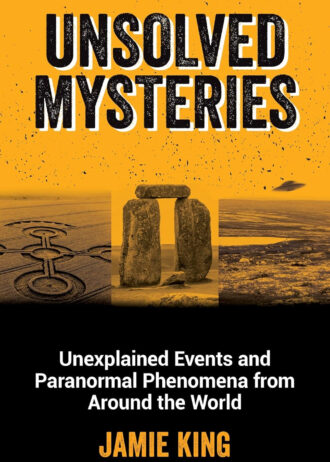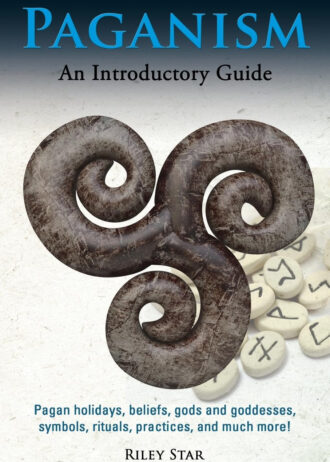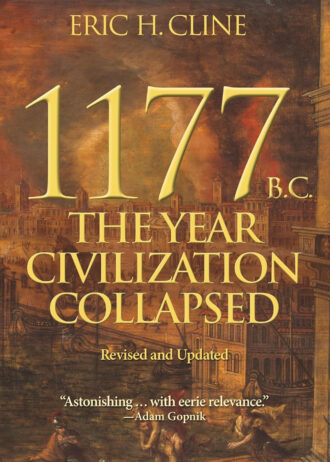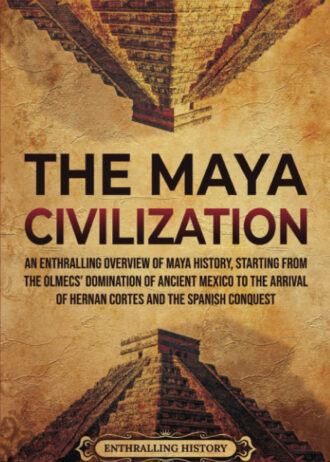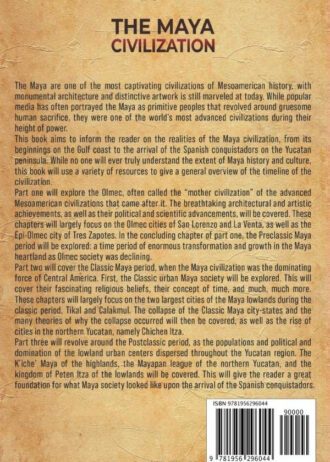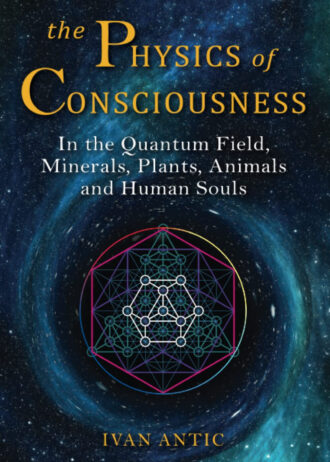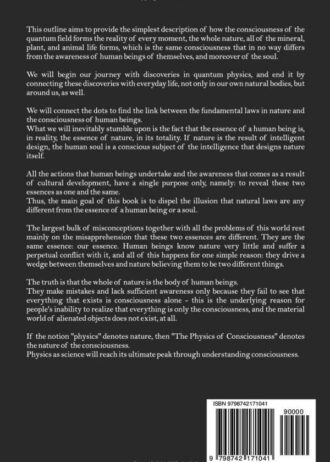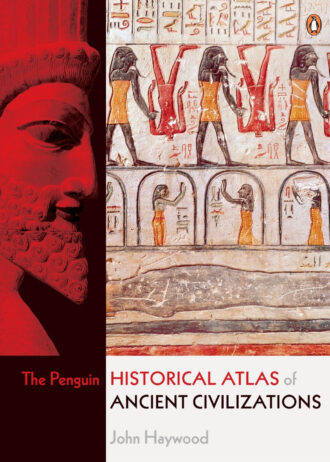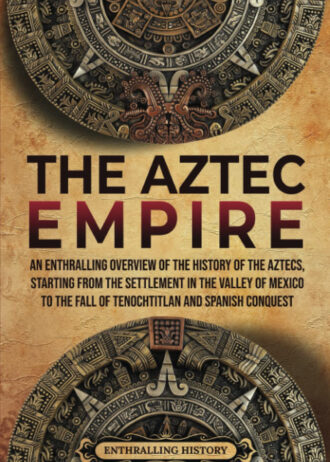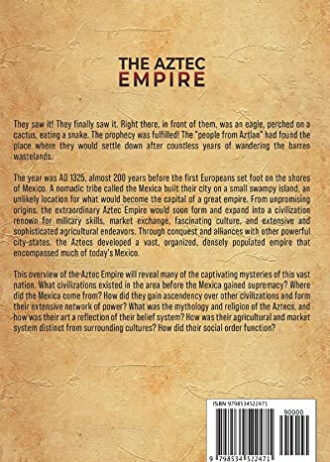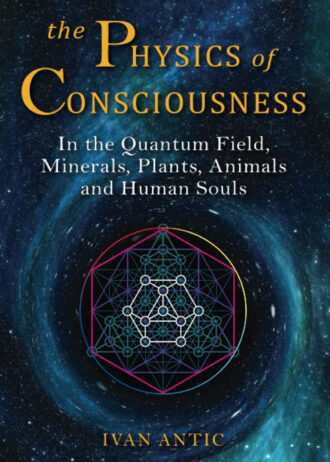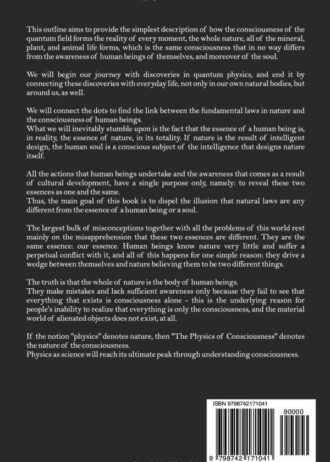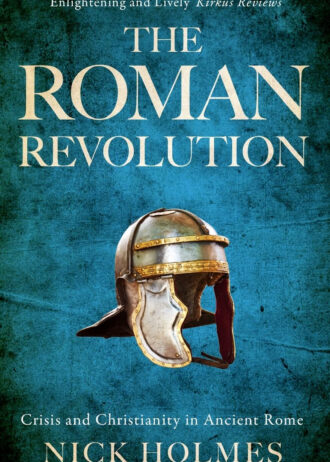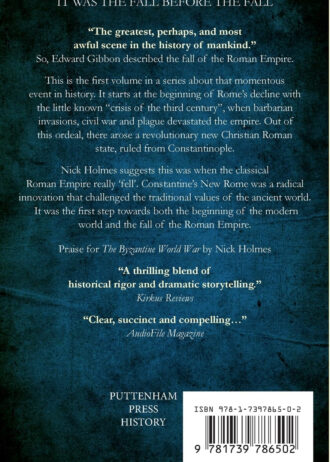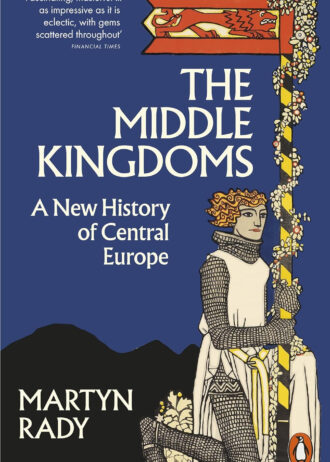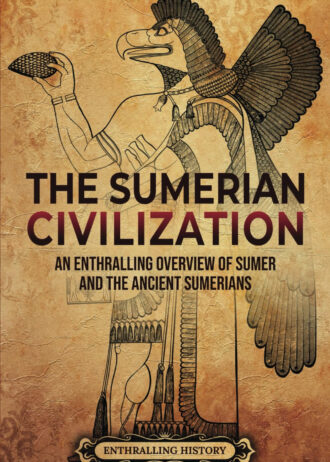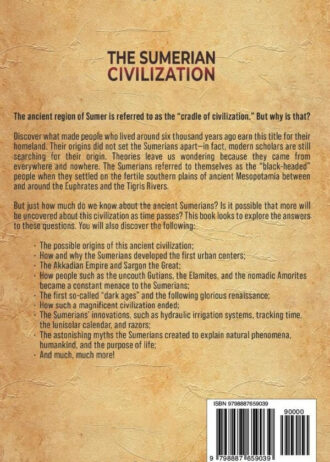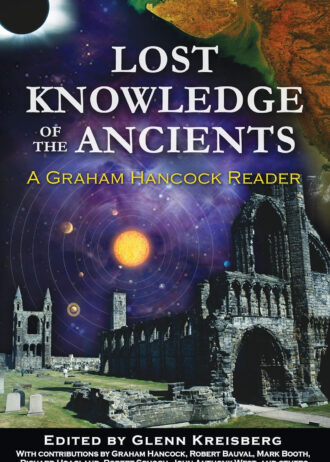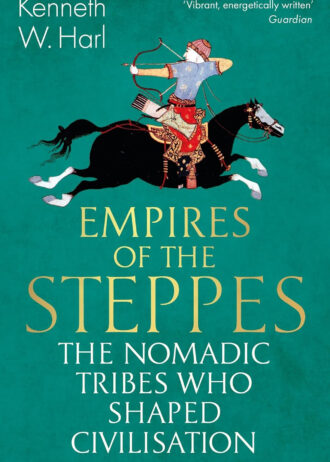Paganism: Pagan holidays, beliefs, gods and goddesses, symbols, rituals, practices, and much more! An Introductory Guide
1177 B.C.: The Year Civilization Collapsed: Revised and Updated (Turning Points in Ancient History)
£13.22A bold reassessment of what caused the Late Bronze Age collapse
In 1177 B.C., marauding groups known only as the “Sea Peoples” invaded Egypt. The pharaoh’s army and navy managed to defeat them, but the victory so weakened Egypt that it soon slid into decline, as did most of the surrounding civilizations. After centuries of brilliance, the civilized world of the Bronze Age came to an abrupt and cataclysmic end. Kingdoms fell like dominoes over the course of just a few decades. No more Minoans or Mycenaeans. No more Trojans, Hittites, or Babylonians. The thriving economy and cultures of the late second millennium B.C., which had stretched from Greece to Egypt and Mesopotamia, suddenly ceased to exist, along with writing systems, technology, and monumental architecture. But the Sea Peoples alone could not have caused such widespread breakdown. How did it happen?
In this major new account of the causes of this “First Dark Ages,” Eric Cline tells the gripping story of how the end was brought about by multiple interconnected failures, ranging from invasion and revolt to earthquakes, drought, and the cutting of international trade routes. Bringing to life the vibrant multicultural world of these great civilizations, he draws a sweeping panorama of the empires and globalized peoples of the Late Bronze Age and shows that it was their very interdependence that hastened their dramatic collapse and ushered in a dark age that lasted centuries.
A compelling combination of narrative and the latest scholarship, 1177 B.C. sheds new light on the complex ties that gave rise to, and ultimately destroyed, the flourishing civilizations of the Late Bronze Age―and that set the stage for the emergence of classical Greece.
Before the Pyramids: Cracking Archaeology’s Greatest Mystery
£11.70Journey with Christopher Knight and Alan Butler as they divulge their chillingly compelling scientific evidence of the existence of an advanced, technological civilisation in the far-off Ages. The suggestion that the Giza pyramids were laid out to represent the stars of Orion’s belt, with the position of the River Nile reflecting the Milky Way, was first put forward by Robert Bauval. In Before the Pyramids, Knight and Butler reveal that the British henges were arranged in the same formation but much earlier. They also present irrefutable evidence that the astronomical calculations determining the layout of the pyramids could only have been made from the site of the henges in North Yorkshire. From this they can conclude that the pyramids of the pharaohs were conceived and planned in Britain! Their next stunning discovery takes us to modern times. They have found evidence that the whole Megalithic measuring system has survived into the 20th century. There are examples in Washington, DC even in the positioning and construction of the Pentagon, which was only commenced in 1942 and is an exact copy of the dimensions of Stonehenge, dating to 3,000 BC.
Get your hands on this world-shattering take on modern day civilisation.
The Maya Civilization: An Enthralling Overview of Maya History, Starting From the Olmecs’ Domination of Ancient Mexico to the Arrival of Hernan Cortes and the Spanish Conquest
£11.01What is the importance of Chichen Itza’s discovery?
How did this mighty civilization fall?
If you want answers to these intriguing questions, then keep reading…
The Mayans created an amazing society, full of surprises that keep us guessing how these people came to be and why –
exactly – their civilization fell. Theories abound, archeologic discoveries both perplex and inspire us, but one thing remains: their story reads much more like our recent past than you’d ever imagined!This book takes readers on a journey that few have taken, deep into the Mayans’ lineage, customs, politics, and daily life. Join us as we delve deep into the Maya story, uncovering stories, facts, and theories about this important – yet perplexing – society:
- The bitter irony of Catholicism’s spread in Maya culture
- Who was the “mother civilization” of Mesoamerica?
- Did they really practice human sacrifice?
- A different kind of calendar…
- What inspired the rise of city-states in this ancient culture?
- Did the Maya develop the wheel?
- How – and what did they use – to make paint
- Were the Maya peaceful?
- Inventions galore – but what did they invent that we still use today?
- Why – and how – did the Spanish decide to conquer the Maya?
- Did a megadrought kill off the Mayans?
- Heavens, Earth, and Underground: Not just for Hobbits
- How did the large cities influence Mayan society – and who ruled them?
You’ll learn some fun facts – but will also be challenged with archaeologically-puzzling discoveries and learn of one man who escaped death-by-politics. (Exile wasn’t good enough for some Mayan leaders; they meant to exterminate those who opposed them!)
Grab your copy of this book, and dive into the many astonishing elements of this ancient civilization!
Codex Esoterica: The Compendium of Hidden Human Knowledge
£21.88Codex Esoterica is a compilation of multidisciplinary knowledge. It is a fusion of many fields of science, esoteric wisdom, philosophy, and Ancient Spirituality. It is designed to transform a person into a Philomath, or lover of learning. Inside is knowledge acquired from in-depth study of the Spiritual Traditions of the Ancient and Modern world, the Sciences, the Occult, and everything in between. It is not intended to be a hard rule for how absolutely everything works. No mortal can know it, or the being would be all-knowing, or what humanity has traditionally referred to as god.
What’s Inside:
- Sacred Geometry Unveiled: Codex Esoterica begins its journey by unraveling the secrets of sacred geometry, exposing the intricate design that governs the physical universe. Through profound insights, readers will gain a deep understanding of how these geometric patterns shape and mold the world around us.
- Forces of Energy and Their Dance with Matter: Navigate the complex fusion between the forces of energy and the material realm. Codex Esoterica illuminates the symbiotic relationship between energy and matter, comprehensively exploring the unseen forces that influence our everyday experiences.
- Consciousness as the Navigator: Embark on a transformative exploration of consciousness and its unparalleled role in directing the ebb and flow of energy. This section provides profound insights into the nature of consciousness, empowering readers to harness their awareness as a powerful force for intentional living.
- The Purposeful Incarnation: Uncover the mysteries of your existence as Codex Esoterica delves into the reasons behind your chosen incarnation on Earth. Gain clarity on the purpose that led you to this moment and understand the cosmic forces in your journey through time and space.
- The Human Body as the Vessel of Wisdom: In the final revelation, Codex Esoterica unveils the remarkable truth that the human body is a repository of this sacred knowledge. Learn how to operate your body as an instrument for conscious development, unlocking the potential for profound discoveries and fulfilling your life’s purpose.
Codex Esoterica is a beacon of enlightenment for those seeking a deeper understanding of the hidden realms that shape our reality. Seasoned seekers or curious novices will find invaluable knowledge about the profound journey into the heart of esoteric wisdom, providing the tools to navigate the intricate tapestry of existence. Exploring Codex begin the expedition into the realms of hidden human wisdom.
As Graham Hancock famously said, Humanity is a species with amnesia. The purpose of forgetting, the reason for the amnesia, is to get us to focus on the matter. Focus on the matter creates a mission that must be accomplished with the time given here.
Time does not stop moving, whether you want to or not it forces us to make a choice. We cannot do all things because that would be another godlike quality.
What we decide to focus on either aligns with our true self and the desire for a certain experience, or a fake identity we manufacture to help someone else realize their dream.
My sincerest wish in writing this is that something within these pages will allow you to realize yours.
Recognize what is in your sight. That which is hidden from you will become plain to you.
The Physics of Consciousness: In the Quantum Field, Minerals, Plants, Animals and Human Souls (Existence – Consciousness – Bliss)
£11.49Understanding the true nature of consciousness is our prime responsibility.
Rampant deception, misunderstanding, and conflict in the human race today threaten the very existence of humankind.
All conflict is based on the fundamental misunderstanding and lack of awareness we hold about the true nature of existence. All misinterpretation and deception is rooted in differentiating consciousness from existence. By separating what goes on in our head from what goes on in the world, we divide our thoughts from our words and deeds.
In reality, consciousness and existence are the same thing.
This book confirms that external existence is an indivisible part of our consciousness and essence.
The consciousness of our mind is an integral part of the same consciousness that creates existence itself.
Contrary to traditional thinking, there is no multitude of consciousnesses. Consciousness is one and the same in everything. This one consciousness merely divides itself in order to experience every possible aspect of existence. Consciousness and existence are the same. Together, they comprise our very essence – our soul.
The true nature of consciousness and existence cannot be separated from the true nature of our essence or soul.
We cannot live one way, be aware in another way, and relate to our essence in a completely different way. Soul consciousness is inseparable from the world we live in. Insofar as we distance ourselves from soul consciousness, existence remains inauthentic, painful, and heartless. By separating ourselves from soul consciousness, we separate from consciousness and existence itself.
Just claiming that consciousness and existence are the same is not sufficient.
This book aims to make such Unity crystal clear.
Consciousness is presented here in all its details, in all its functioning, in all dimensions, through all nature and all forms – from the quantum field to minerals, plants, animals, and humans, as well as cultural development, artificial intelligence, ethics, and ultimately the discipline of self-knowledge.
This book is comprehensive and insightful.
Unity of the divine consciousness that creates everything using our own thoughts and actions is proven and demonstrated here in practical terms.
This is the only way any book explaining the world can have true practical value.
Or be of redeeming importance to the world.
—
“Insightful, profoundly meaningful and logical presentation of the physics of Consciousness” – Clement Binnings, Jr., author
“Unique, universal, aligned with no particular religion, profound, uplifting. Ivan Antic is a gift to humanity.” – Valerie Deva, author
The Penguin Historical Atlas of Ancient Civilizations
£11.09The Aztec Empire: An Enthralling Overview of the History of the Aztecs, Starting with the Settlement in the Valley of Mexico (Ancient Mexico)
£11.71The remarkable Aztecs formed a vast, organized empire renown for military prowess, expansive trade, intriguing culture, and ingenious agriculture – all from an
island in a swamp. But where was their mysterious homeland of Aztlan? How did they ascend to dominance in the Valley of Mexico?Explore the mesmerizing origins of the Aztecs, discover how a wandering desert tribe came to rule much of present-day Mexico, and investigate the spectacular – albeit somewhat depraved – culture that set their civilization apart.
This easy-to-read, comprehensive, and engaging history of the Aztec Empire will unlock the little-known and awe-inspiring stories and culture of a legendary people. This well-researched and authoritative presentation, accompanied by striking illustrations, brings the Aztec civilization to life.
Here are some of the fascinating questions you will explore:
- What secrets have recent archaeological finds uncovered about the Aztecs and other Mesoamerican cultures?
- How did the startling cultures that existed before the Aztecs influence them? What made these pre-existing cultures famous?
- What prophesies propelled the Mexica into their empire-building destiny and formed their self-identity?
- Why did the Mexica build their astonishing city on an island in the middle of a lake? How did it grow into one of the largest cities in the world at that time?
- Was their mysterious homeland of Aztlan a real place? If so, where was it?
- What’s this story about an eagle on a cactus eating a rattlesnake?
- How did the Mexica turn the tables to rule over the tribes that once dominated them?
- What intrigue led to the coalition armies and the Triple Alliance?
- How did the Aztecs form their extensive network of power and organize their far-flung city-states?
- What were their mythology and religion like? Did they actually practice human sacrifice?
- How did they use their stunning sculptures and brilliant artwork as a type of propaganda?
- Were they really one of the first civilizations to require education for all classes and both boys and girls?
- What did they eat? Was it anything like present-day Mexican food?
- How did the common people live? What did they do for fun?
- What did the Aztecs do when the Spaniards landed in their territory?
- How did conquistador Hernán Cortés cunningly form alliances with the Aztecs’ enemies?
- And much, much more!
Scroll up and click the “add to cart” button to learn more about the incredible Aztecs!
The Physics of Consciousness: In the Quantum Field, Minerals, Plants, Animals and Human Souls (Existence – Consciousness – Bliss)
£11.49Understanding the true nature of consciousness is our prime responsibility.
Rampant deception, misunderstanding, and conflict in the human race today threaten the very existence of humankind.
All conflict is based on the fundamental misunderstanding and lack of awareness we hold about the true nature of existence. All misinterpretation and deception is rooted in differentiating consciousness from existence. By separating what goes on in our head from what goes on in the world, we divide our thoughts from our words and deeds.
In reality, consciousness and existence are the same thing.
This book confirms that external existence is an indivisible part of our consciousness and essence.
The consciousness of our mind is an integral part of the same consciousness that creates existence itself.
Contrary to traditional thinking, there is no multitude of consciousnesses. Consciousness is one and the same in everything. This one consciousness merely divides itself in order to experience every possible aspect of existence. Consciousness and existence are the same. Together, they comprise our very essence – our soul.
The true nature of consciousness and existence cannot be separated from the true nature of our essence or soul.
We cannot live one way, be aware in another way, and relate to our essence in a completely different way. Soul consciousness is inseparable from the world we live in. Insofar as we distance ourselves from soul consciousness, existence remains inauthentic, painful, and heartless. By separating ourselves from soul consciousness, we separate from consciousness and existence itself.
Just claiming that consciousness and existence are the same is not sufficient.
This book aims to make such Unity crystal clear.
Consciousness is presented here in all its details, in all its functioning, in all dimensions, through all nature and all forms – from the quantum field to minerals, plants, animals, and humans, as well as cultural development, artificial intelligence, ethics, and ultimately the discipline of self-knowledge.
This book is comprehensive and insightful.
Unity of the divine consciousness that creates everything using our own thoughts and actions is proven and demonstrated here in practical terms.
This is the only way any book explaining the world can have true practical value.
Or be of redeeming importance to the world.
—
“Insightful, profoundly meaningful and logical presentation of the physics of Consciousness” – Clement Binnings, Jr., author
“Unique, universal, aligned with no particular religion, profound, uplifting. Ivan Antic is a gift to humanity.” – Valerie Deva, author
The Roman Revolution: 1 (The Fall of the Roman Empire)
£11.99It was a time of revolution.
The Roman Revolution describes the little known “crisis of the third century”, and how it led to a revolutionary new Roman Empire. Long before the more famous collapse of the Western Roman Empire in the fifth century, in the years between AD 235-275, barbarian invasions, civil war and plague devastated ancient Rome. Out of this ordeal came new leaders, new government, new armies and a new vision of what it was to be Roman. Best remembered today is the rapid rise of Christianity in this period, as Rome’s pagan gods were rejected, and the emperor Constantine converted to this new religion. Less well remembered is the plethora of other changes that conspired to provide an environment well suited to a religious revolution. Drawing on the latest research, Nick Holmes looks for new answers to old questions. He charts the rise of the Roman Republic and the classical Roman Empire, examining the roles played by sheer good luck and the benign climate. For example, he emphasises the unexpected death of Alexander the Great and the subsequent weakness of the Greek successor states as the ideal political environment for Rome’s expansion. But Rome’s good fortune did not last. The rise of Sasanian Persia, the growing strength of the German barbarians, and the brutal effects of the Antonine plague caused the near collapse of the Roman Empire in the third century. Focusing on the reigns of the critically important but under-researched emperors in the third century, such as Aurelian, Diocletian and Constantine, he vividly brings to life how Rome just escaped catastrophe in the third century, and embarked on a journey that would take it into a brave new world – one which provided the foundations for modern Europe and America. This book is the first of a multi-volume series that will chart the full course of the Fall of the Roman Empire from the third century AD to the seventh. The second book, The Fall of Rome, continues the story of Rome’s decline up to the sack of Rome by Alaric the Goth in AD 410. The third book, Rome and Attila, covers the period from AD 410 to the western empire’s final demise in AD 476. Further books will look at the Roman reconquest of Italy and North Africa under the Emperor Justinian in the sixth century, followed by the rise of Islam and the demise of the Eastern Roman Empire in the seventh century.The Middle Kingdoms: A New History of Central Europe
£13.59‘Fascinating, masterful … gems scattered throughout the book’ Peter Frankopan, Spectator
‘Quirkily original but also scholarly and authoritative, to be read for pleasure and serious reflection’ Telegraph
*The dramatic history of Europe’s shape-shifting centre, from the author of The Habsburgs*
Central Europe is not just a space on a map but also a region of shared experience – of mutual borrowings, impositions and misapprehensions. From the Roman Empire onwards, it has been the target of invasion from the east. In the Middle Ages, Central Europeans cast their eastern foes as ‘the dogmen’. They would later become the Turks, Swedes, Russians and Soviets, all of whom pulled the region apart and remade it according to their own vision.
Competition among Europe’s Middle Kingdoms yielded repeated cultural effervescences. This was the first home of the High Renaissance outside Italy, the cradle of the Reformation, the starting point of the Enlightenment, Romanticism, the symphony and modern nationalism. It was a permanent battleground too for religious and political ideas.
Most recent histories of Central Europe confine themselves to the lands in between Germany and Russia, homing in on Poland, Hungary, and what is now the Czech Republic. This new history embraces the whole of Central Europe, including the German lands as well as Ukraine and Switzerland. The story of Europe’s Middle Kingdoms is a reminder of Central Europe’s precariousness, of its creativity and turbulence, and of the common cultural trends that make these lands so distinctive.
The Sumerian Civilization: An Enthralling Overview of Sumer and the Ancient Sumerians (History of Mesopotamia)
£10.49Ancient Mesopotamia’s legacy was truly revolutionary. Childlike pictures scratched into wet clay evolved into the first written language. The Mesopotamians wrote the first epic poems, the first hymns, the first histories, and the first law codes. They developed the first wheel for transportation; simple carts that hauled bricks or produce morphed into chariots racing along at thirty-five miles per hour.
They gazed at the sky and mapped it, observing the planets’ retrograde motions and predicting lunar and solar eclipses. They developed the concept of time, measurements, basic counting, higher math, and hydraulic engineering.
Mesopotamia gave birth to the world’s first great empires—the Akkadians, Assyrians, Babylonians, and Achaemenids—which stretched over three continents.
A glimpse at the questions this overview unpacks includes:
- How old is the world’s first city?
- How did the Eridu Genesis compare to Noah and the ark?
- How fast was the world’s first postal system?
- How many times did Babylon’s patron god Marduk get stolen?
- How did Hammurabi’s law code compare to the Law of Moses?
- Who calculated pi (π) to the value of 3.125 and understood the Pythagorean theorem twelve centuries before Pythagoras was born?
- Did Xerxes really have a million men in his army?
- Which empire encompassed 44 percent of the world’s population?
- What eunuch poisoned most of the Persian royal family?
- And much, much more!
Scroll up and click the “add to cart” button to learn the stories of incredible ancient Mesopotamia!
Lost Knowledge of the Ancients: A Graham Hancock Reader
£18.38Empires of the Steppes: The Nomadic Tribes Who Shaped Civilisation (Bloomsbury Publishing)
£12.09An epic history of how the so-called ‘barbarians of the steppes’ shaped the modern world.
‘A rollercoaster of historical narration’ History Today
‘This is a history of epic scope that brings together the empires of the steppe land with the caravan cities of the Silk Road and imperial China’ Martyn Rady, author of The Middle Kingdoms
‘A sweeping account of forty-five centuries of nomadic tribes’ Gillian Tett, Financial Times
‘Flips the script to present the booted, felt-capped, leather-trousered and kaftan-wearing nomads as the bearers of civilisation . . . Harl’s exhaustively researched book will ensure they rejoin the narrative of world history‘ Marc David Baer, Guardian
The barbarian nomads of the Eurasian steppes played a decisive role in world history, but their achievements have gone largely unnoticed. These tribes produced some of the world’s greatest conquerors: Attila the Hun, Genghis Khan and Tamerlane, among others. And their deeds still resonate today.
Indeed, these nomads built long-lasting empires, facilitated the first global trade of the Silk Road and disseminated religions, technology, knowledge and goods of every description that enriched and changed the lives of so many across Europe, China and the Middle East. From a single region emerged a great many peoples – the Huns, the Mongols, the Magyars, the Turks, the Xiongnu, the Scythians, the Goths – all of whom went on to profoundly and irrevocably shape the modern world.
In this enthralling new history, Professor Kenneth W. Harl draws on a lifetime of scholarship to vividly recreate the lives of these peoples from their beginnings to the early modern age. Their brutal struggle to survive on the steppes bred a resilient, pragmatic people ever-ready to learn from their neighbours. In warfare, they dominated the battlefield for over fifteen hundred years. Under charismatic rulers, they could topple empires and win their own.

